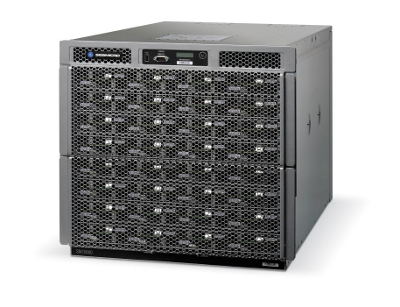 NEWS
NEWS
 NEWS
NEWS
 NEWS
NEWS
![]() Following its buyout of the low power sever specialist SeaMicro earlier this year, Advanced Micro Services (AMD) has just unveiled a new microserver based on its fresly-acquired technology that comes especially optimized for cloud computing and big data purposes. Fresh off the production line, the SeaMicro SM15000 boasts up to 5 petabytes of storage in a faster and more resilient system than anything that its nearest competitors can offer.
Following its buyout of the low power sever specialist SeaMicro earlier this year, Advanced Micro Services (AMD) has just unveiled a new microserver based on its fresly-acquired technology that comes especially optimized for cloud computing and big data purposes. Fresh off the production line, the SeaMicro SM15000 boasts up to 5 petabytes of storage in a faster and more resilient system than anything that its nearest competitors can offer.
The new server, which packs processors designed by both AMD and Intel, consumes less power than previous products whilst offering greater bandwidth, the company said. The first SeaMicro SM15000’s are available now, running Sandy Bridge processors from Intel, while in November the server will be updated with AMD’s Piledriver Opteron and Intel’s Ivy Bridge.
AMD claim that the first SeaMicro SM15000 uses just 25% of the power consumed by alternative microservers, whilst offering 16 times as much bandwidth as the next “best in class” alternative. Another feature is SeaMicro’s Freedom Fabric Storage, which will allow “a single ten rack unit system to support more than five petabytes of low-cost, easy-to-install storage”.
Andrew Feldman, ex-CEO of SeaMicro and now with AMD, stated:
“Once these disks are interconnected with the fabric, they are seen and shared by all servers in the system. This approach provides the benefits typically provided by expensive and complex solutions such as network-attached storage and storage area networking with the simplicity and low cost of direct attached storage.”
The SeaMicro SM15000 underlines AMD’s goal of nailing down a place in the server market, following the chipmaker’s miserable failure to carve a niche for itself in the mobile sector. When it acquired SeaMicro back in January of this year, the company revealed that it saw low-power computer servers as a niche with real potential for growth, as companies expand their internet services while at the same time, look to cut down on costs. This new focus comes at a time when rival ARM, which has all but sewn up the mobile market, now turns its attention to data servers, traditionally the stomping ground of AMD and Intel.
AMD and Intel are both feeling the pressure at the moment as growing numbers of consumers turn to smartphones and tablet devices ahead of traditional PCs.
Support our open free content by sharing and engaging with our content and community.
Where Technology Leaders Connect, Share Intelligence & Create Opportunities
SiliconANGLE Media is a recognized leader in digital media innovation serving innovative audiences and brands, bringing together cutting-edge technology, influential content, strategic insights and real-time audience engagement. As the parent company of SiliconANGLE, theCUBE Network, theCUBE Research, CUBE365, theCUBE AI and theCUBE SuperStudios — such as those established in Silicon Valley and the New York Stock Exchange (NYSE) — SiliconANGLE Media operates at the intersection of media, technology, and AI. .
Founded by tech visionaries John Furrier and Dave Vellante, SiliconANGLE Media has built a powerful ecosystem of industry-leading digital media brands, with a reach of 15+ million elite tech professionals. The company’s new, proprietary theCUBE AI Video cloud is breaking ground in audience interaction, leveraging theCUBEai.com neural network to help technology companies make data-driven decisions and stay at the forefront of industry conversations.